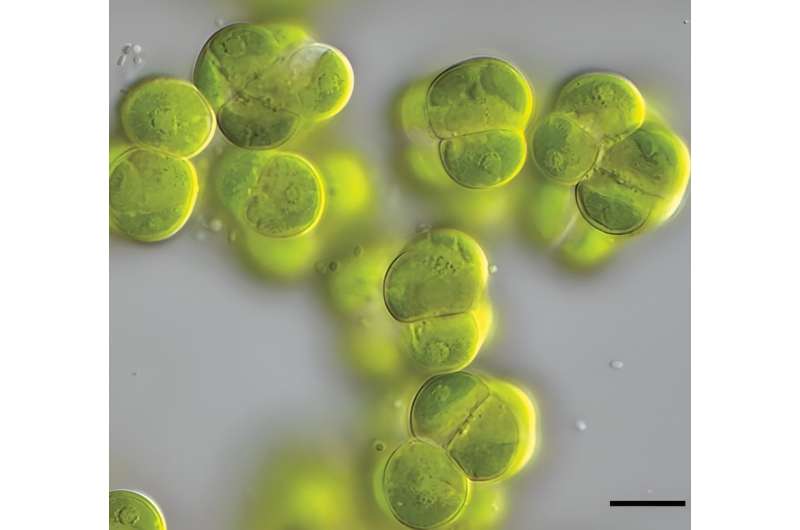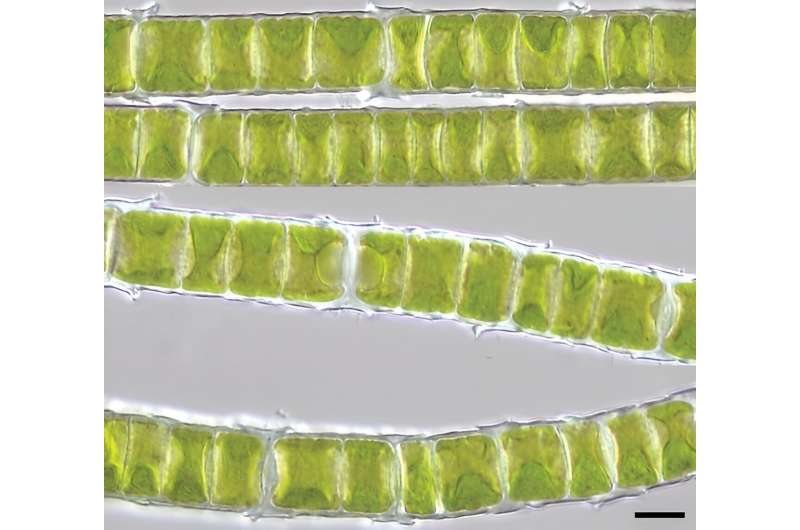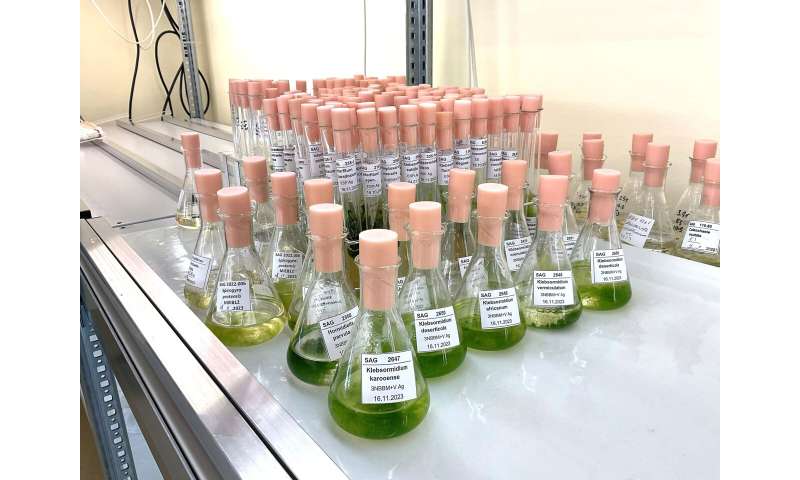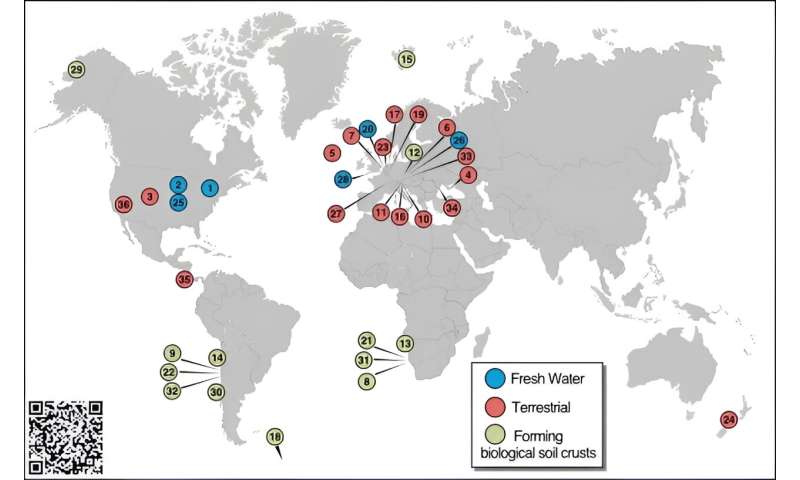This article has been reviewed according to Science X's editorial process and policies. Editors have highlighted the following attributes while ensuring the content's credibility:
fact-checked
peer-reviewed publication
trusted source
proofread
Complex green organisms emerged a billion years ago, says new research

Of all the organisms that photosynthesize, land plants have the most complex bodies. How did this morphology emerge? A team of scientists led by the University of Göttingen has taken a deep dive into the evolutionary history of morphological complexity in streptophytes, which include land plants and many green algae.
The team's research allowed them to go back in time to investigate lineages that emerged long before land plants existed. Their results revise the understanding of the relationships of a group of filamentous algal land colonizers much older than land plants. Using modern gene sequencing data, researchers pinpoint the emergence of multicellularity to almost a billion years ago. The results were published in the journal Current Biology.
The study focused on Klebsormidiophyceae, a class of green algae known for its ability to colonize diverse habitats worldwide. The team of researchers conducted extensive sampling, investigating habitats ranging from streams, rivers, and lake shores to bogs, soil, natural rocks, tree bark, acidic post-mining sites, sand dunes, urban walls, and building façades.
"It's really fascinating that these tiny robust little organisms have such a high diversity in their morphology and also are extremely well adapted to live in sometimes very harsh environments," says Dr. Tatyana Darienko, University of Göttingen's Institute for Microbiology and Genetics.

This comprehensive sampling aimed to create a global distribution map for Klebsormidiophyceae, emphasizing their adaptability, ecological significance, and hidden diversity. Based on genetic data calibrated by fossils, the researchers performed "molecular clock analyses."
While delving into the complex evolutionary history of Klebsormidiophyceae, the researchers faced challenges in resolving phylogenetic relationships using traditional markers. To overcome this, they employed hundreds of genes obtained from the transcriptomes of 24 isolates from different continents and habitats.
"Our approach, known as phylogenomics, was to reconstruct the evolutionary history taking into account whole genomes or large fractions of genomes," explains Dr. Iker Irisarri, Leibniz Institute for the Analysis of Biodiversity Change. "This extremely powerful method can reconstruct evolutionary relationships with very high precision."
The research revealed a new phylogenomic tree of life for Klebsormidiophyceae, which is divided into three orders.
-

Liquid samples of different algal species investigated in the study, all stored in the Culture Collection of Algae at Göttingen University. Credit: Tatyana Darienko -

World map showing the broad habitat range of the algal class Klebsormidiophyceae. Samples were taken from the hottest (Atacama desert) to the coldest (Antarctic) regions. Next to fresh water and terrestrial alga species, biological soil crust-forming algae were also included in the study. Credit: Maaike Bierenbroodspot
"This deep dive into the phylogenomic framework and our molecular clock unveiled Klebsormidiophyceae's ancient ancestor—a multicellular entity thriving millions of years ago whose descendants began to split into three distinct branches over 800 million years ago," says Maaike Bierenbroodspot, Ph.D. researcher in Applied Bioinformatics, University of Göttingen.
These results were used to explore the evolutionary history of multicellularity within streptophytes. The study showed that an ancient common ancestor of land plants, other streptophyte algae, and Klebsormidiophyceae was already multicellular.
Professor Jan de Vries, Göttingen University's Institute for Microbiology and Genetics, concludes, "This finding sheds light on the genetic potential for multicellularity among streptophytes, indicating an ancient origin for this crucial trait almost a billion years ago."
More information: Maaike J. Bierenbroodspot et al, Phylogenomic insights into the first multicellular streptophyte, Current Biology (2024). DOI: 10.1016/j.cub.2023.12.070
Journal information: Current Biology
Provided by University of Göttingen





















